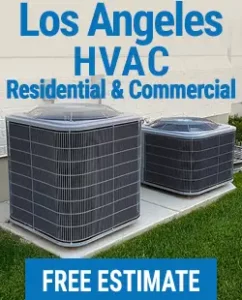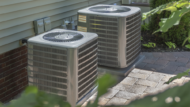In an era of skyrocketing energy prices and increasing environmental awareness, the allure of an energy-efficient home is becoming hard to ignore. Unfortunately, many homeowners are left scratching their heads on where to start this green transformation. Fear not, as we’ve assembled this comprehensive guide to help you navigate this eco-friendly journey.
Grasping Home Energy Efficiency
Let’s start by breaking down what energy efficiency truly means for a home. Energy-efficient homes aim to reduce unnecessary energy use, lower greenhouse gas emissions, and reduce the strain on nonrenewable resources. By implementing the strategies outlined in this guide, you can transform your home into an eco-friendly haven that combines comfort and cost-saving with a clear environmental conscience.
Insulation: The Frontline of Energy Efficiency
The first point of call for enhancing your home’s energy efficiency should be insulation. Quality insulation plays a crucial role in retaining heat during winter and keeping the heat out during summer. This year-round benefit reduces the need for excessive artificial heating and cooling, significantly slashing your energy bills. It also means a more comfortable living environment, with fewer drafts and less temperature variation.
Delving Deeper: Types of Insulation
The world of insulation is vast, offering various types, each with its unique strengths. There are several options to explore, from batt and blown-in insulation to the more modern spray foam insulation. While the specific choice hinges largely on your home’s structure and climatic zone, an insulation professional’s guidance can ensure the best fit for your needs.
 Windows and Doors: Unseen Energy Drainers
Windows and Doors: Unseen Energy Drainers
Believe it or not, your windows and doors can be silent saboteurs to your energy efficiency goals. Older models or those with poor installation can contribute to significant energy loss. The solution? Consider an upgrade to Energy Star-certified windows and doors. They feature advanced technologies that reduce air leakage and resist heat flow, lowering energy costs and boosting indoor comfort.
Bright Ideas: Energy-Efficient Lighting
Switching to energy-efficient lighting is a relatively simple step that can have an outsized impact. LED lights take the crown in this category, consuming a fraction of the energy used by traditional incandescent bulbs. They also shine longer – up to 25 times longer, in fact. While they might pinch the pocket a bit more initially, the long-term energy savings they offer make them a no-brainer.
Home Appliances: The Energy-Efficient Upgrade
Your everyday home appliances are significant energy consumers, which means they offer an excellent opportunity for energy savings. Next time you’re in the market for a new refrigerator, dishwasher, or dryer, check out Energy Star-rated options. These appliances are designed to provide the same (or better) functionality while using less energy. While the upfront costs might be higher, reducing your energy bills over the appliance’s lifespan will more than makeup for it.
Water Conservation: The Unseen Aspect of Energy Efficiency
Energy efficiency and water conservation are two sides of the same coin. Simple upgrades like installing low-flow fixtures and energy-efficient dishwashers can save thousands of gallons of water annually. Additionally, insulating your water heater and hot water pipes can help you save on energy bills by reducing heat loss.
HVAC System: The Unsung Hero
Your HVAC system is the unsung hero of your home’s energy efficiency. Regular maintenance, including routine air filter changes, ensures it runs efficiently. A well-maintained HVAC unit will use less energy and can extend the lifespan of the system. Moreover, a programmable thermostat can optimize your heating and cooling, keeping your home comfortable when you’re there, and saving energy when you’re not.
California Energy Efficient Home Trends:
Californians are embracing innovative methods to optimize their home’s energy efficiency. One increasingly popular strategy is the integration of solar panels. California, with its abundance of sunlight, is an ideal environment for harnessing solar energy. Solar panels can drastically reduce reliance on grid electricity, leading to significant savings on energy bills.
Another unique practice Californians are adopting is xeriscaping. This landscaping method uses drought-resistant plants and creative design to reduce the need for irrigation. With water use being a considerable energy drain, xeriscaping can effectively boost a home’s overall energy efficiency.
Lastly, homeowners are increasingly investing in smart home technology. Devices such as smart thermostats and energy monitors provide real-time data about energy usage, allowing homeowners to optimize their habits and conserve energy.
When it comes to creating an energy-efficient home, every effort matters. Whether you’re making a small tweak or a significant upgrade, each step moves you closer to a more sustainable, cost-effective, and comfortable living space.







